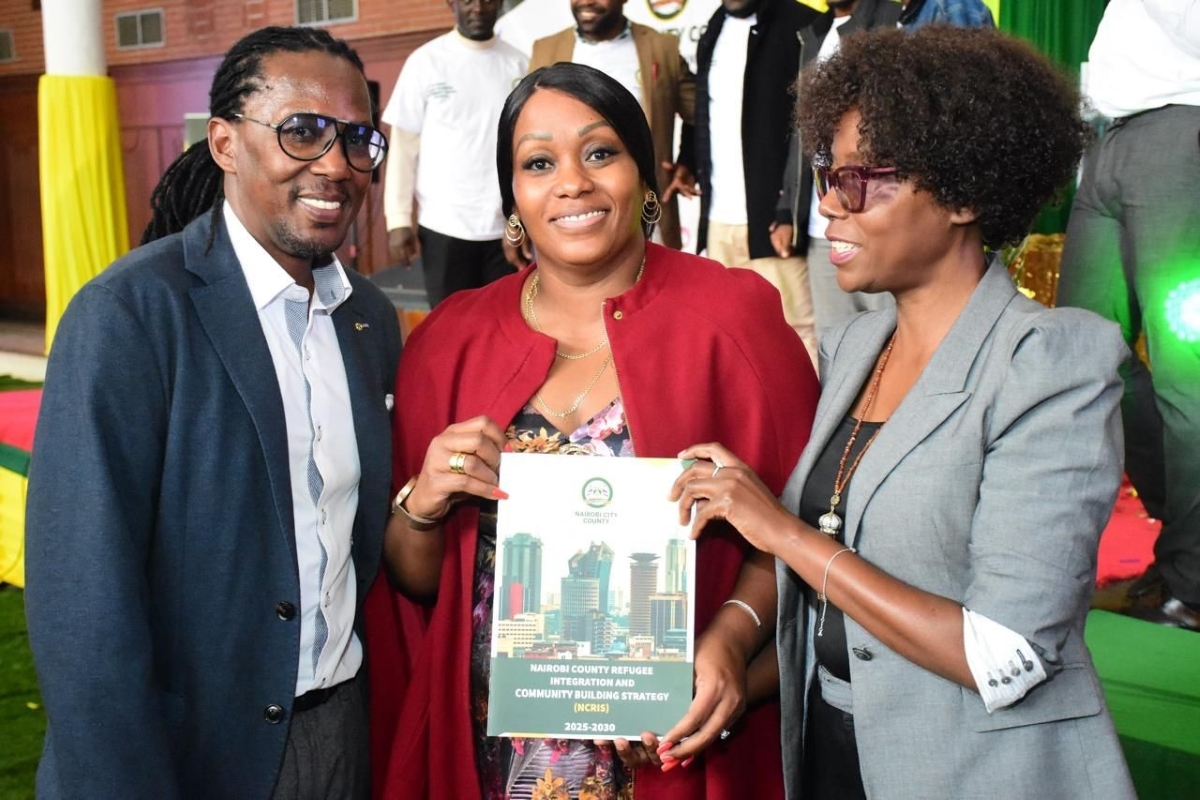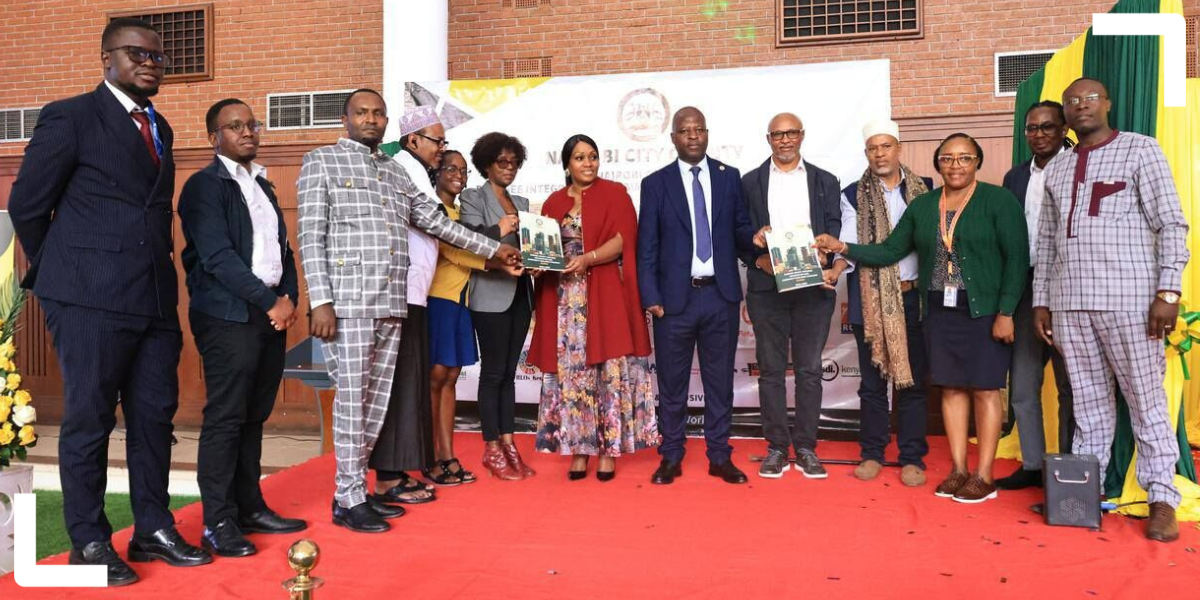By Jerry Okal and Jack Makau
Nairobi City County is taking a significant step forward in fostering inclusive development with its newly launched Refugee Integration and Community Building Strategy (NCRIS). The launch immediately provides refugees and other migrants living in the city with access to public healthcare and city-run schools, and the ability to obtain a business license. It also classifies refugee registration documents as official proof of identity.
The move by the county government, represented by Governor Johnson Sakaja’s office, marks the first time a city government in Africa has created a mandate on refugee affairs. This is unique, not only because Kenya has an encampment policy but also because refugee affairs have previously been the exclusive purview of the national government.
What challenges do refugees in Nairobi face?
Both ACRC and the Nairobi County Government recognise that forced migration tends to be protracted. Thus, refugees in Kenya remain in camps, in some instances for decades. However, currently, Nairobi hosts approximately 120,000 registered refugees and apparently many more are designated to be in camps but have moved into the city.
Moreover, the city also hosts large numbers of economic migrants from the East African region. Until the launch of NCRIS, all these migrant populations were locked out of city services like education, healthcare, formal employment, and business licensing. In addition, many face legal barriers and are vulnerable to social prejudice, exclusion and discrimination.
Overcrowded informal settlements, where many refugees reside, compound these issues with poor sanitation and limited infrastructure and social services. Competition for scarce resources also has the potential to fuel tensions between refugees and locals, hindering peaceful coexistence.
What does the new strategy entail?
The NCRIS seeks to address these challenges through a rights-based, developmental approach. Key measures include improving access to essential services such as healthcare and education, providing skills training and livelihood programmes to promote self-reliance, and strengthening legal protections in line with national and international refugee laws.
The strategy also emphasises community dialogues and cultural exchange initiatives to foster mutual understanding and social harmony. By integrating refugees into Nairobi’s socioeconomic fabric, the county aims to unlock their potential as contributors to the local and national economy.
Governor Sakaja’s administration recognises that refugees bring skills, resilience and diversity that can enrich Nairobi’s growth. This strategy aligns with broader national and regional frameworks, ensuring a coordinated and sustainable approach to refugee inclusion. The launch of the NCRIS and the signing of a Memorandum of Understanding (MoU) with SDI-Kenya mark a pivotal moment, signalling Nairobi’s commitment to becoming a model of urban refugee integration.

Jack Makau, Sue Mwanzia and Amollo Ambole from the ACRC Nairobi team at the NCRIS launch event
What role can ACRC play?
ACRC has partnered with the Nairobi County Government, through its collaboration with SDI-Kenya and the International Institute for Environment and Development (IIED), to support the rollout of the refugee integration strategy. By aligning with the county’s existing framework, the consortium aims to support Nairobi’s vision of becoming a model for progressive refugee integration in Africa, while contributing valuable research and policy insights that could benefit other cities facing similar challenges.
Designed as an action research project, this partnership aims to explore ways of improving the seemingly intractable, and indeed global, challenge of integrating foreign migrants and host populations.
The partnership hypothesises that if development investments aimed at refugees benefit not only them, but also the wider communities where they are housed, then perceptions towards migration may be softened and lead to increased integration. For instance, instead of building a school for refugees, schools in refugee-hosting communities would receive higher financial and development assistance when they enrol children from migrant families.
The uptake goal, which aligns with the NCRIS, aims to improve current methods of supporting refugees. This will be achieved by moving away from reliance on international humanitarian aid and encampment policies. Instead, the focus will be on investing in urban communities that host refugees. The implementation of the NCRIS will serve as a transitional phase until the city government gathers enough evidence to support its own investments in these refugee-hosting communities.
The primary objective of the uptake strategy is to target Nairobi’s urban community, particularly the resource-constrained areas where many migrants reside. While typical projects aim to change the actions of governments and service providers, this project seeks to shift the perceptions of host communities towards migrants, aiming for a significant positive change.
This initiative goes beyond short-term aid. It is a long-term commitment to social cohesion, economic empowerment and shared prosperity between refugees and host communities. Its success depends on collaboration between government agencies, NGOs and local communities, and could set a precedent for other cities grappling with similar challenges. By turning obstacles into opportunities, Nairobi is paving the way for a more inclusive, dynamic and prosperous future for all its residents, refugees and hosts alike.
Photo credits: Sue Mwanzia
Note: This article presents the views of the authors featured and does not necessarily represent the views of the African Cities Research Consortium as a whole.
The African Cities blog is licensed under Creative Commons Attribution-NonCommercial-NoDerivatives 4.0 International (CC BY-NC-ND 4.0), which means you are welcome to repost this content as long as you provide full credit and a link to this original post.


